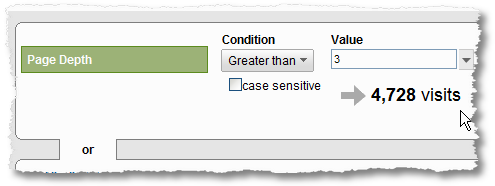Adopting a Micro-strategy Towards Website Data Inside Google Analytics

You have probably heard about the term Big Data, a gigantic movement underway in cloud computing, designed to analyze huge clusters of data sitting inside document folders, image banks, giant databases, email archives and other repositories, which many believe hold hidden pearls of wisdom and could make bigger companies more agile and competitive.
Meanwhile, smaller companies hosting their websites on cheap, professional hosting platforms may simply wish to understand the data accumulating inside free tools like Google Analytics. Just about everyone is comfortable checking overall bounce rates, unique visitors, top performing pages and search engine traffic from SEO strategies. But, what about going further and analyzing which groups of people are visiting more than one page or returning to your site on a regular basis? Or, which keywords produce the longest average visit time on your website?
These questions may be better answered by creating dynamic silos of data through a device called Advanced Segments in Google Analytics. Since every small business is unique and often customized to work in a particular manner, it makes sense to adopt custom segmentation tactics to analyze to your data.
For instance, rather than just reviewing how many page views your website gets, why not ask who visited your site more than three times? The process of launching a new Advanced Segment in Google Analytics is pretty straightforward, leading to you a screen like this one below. Selecting a metric like Page Depth, a condition of “greater than,” and a value of three, gives you the result you need. You simply save the segment to keep it docked to ANY report you run in Google thereafter.

“This can be so valuable on content only websites (more page views more impressions of irrelevant display ads!) or even on ecommerce websites (more pages views the deeper you sink your hook into the visitor, engagement baby!,” said Avinash Kaushik, digital marketing evangelist at Google.
